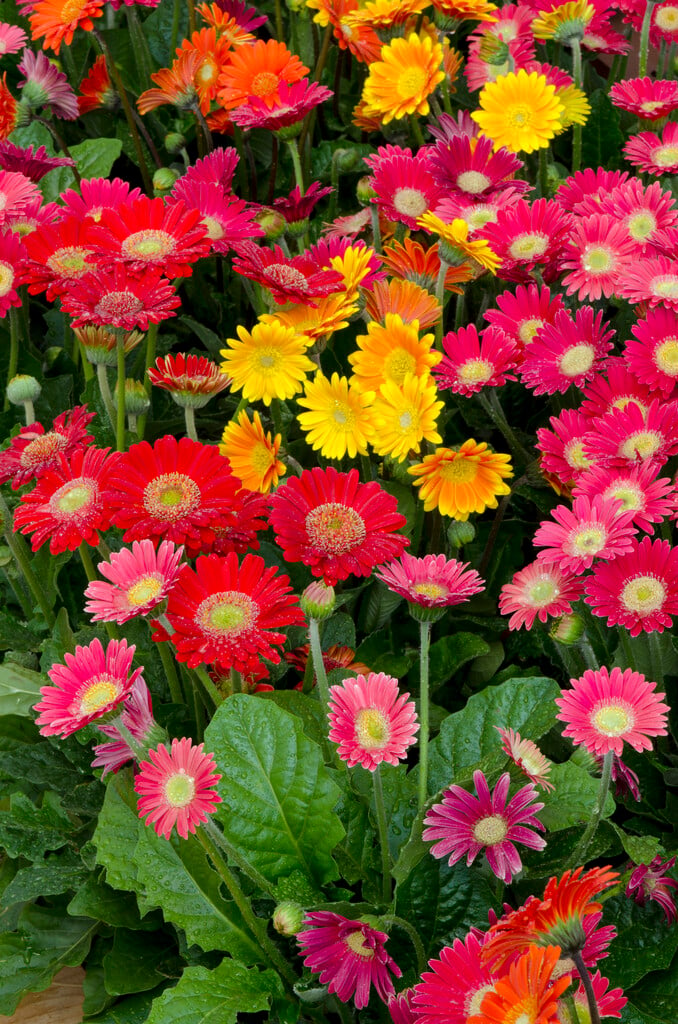Gerbera jamesonii
Barberton daisy
An evergreen, clump-forming perennial with deeply-lobed, dark green leaves with woolly undersides and up to 45cm long. Erect stems bear solitary, daisy-like flowerheads up to 12cm across in shades of red, orange, pink or yellow with yellow centres from late spring to late summer
Size
Ultimate height
0.5–1 metresTime to ultimate height
2–5 yearsUltimate spread
0.1–0.5 metresGrowing conditions
Moisture
Well–drainedpH
Acid, Alkaline, NeutralColour & scent
| Stem | Flower | Foliage | Fruit | |
| Spring | Orange Red Pink Yellow | Green | ||
|---|---|---|---|---|
| Summer | Orange Red Pink Yellow | Green | ||
| Autumn | Green | |||
| Winter | Green |
Position
- Full sun
Aspect
South–facing or West–facing
Exposure
Sheltered Hardiness
H1CBotanical details
- Family
- Asteraceae
- Native to GB / Ireland
- No
- Foliage
- Evergreen
- Habit
- Clump forming
- Genus
Gerbera are perennials with basal rosettes of leaves from which emerge hairy stems each bearing a daisy-like flowerhead; flowers can be single or double and in shades of yellow, orange, red, white, pink or purple
- Name status
Correct
How to grow
Cultivation
Grow in fertile well-drained soil in a sheltered position in full sun; ideal for patio containers grown in a peat-free, loam-based potting compost (JI No.2) and may be overwintered under glass in colder areas. See Gerbera cultivation for further information
Propagation
Propagate for home use by division in early spring or by basal cuttings, or heel cuttings from side shoots, in summer
Suggested planting locations and garden types
- City and courtyard gardens
- Coastal
- Cottage and informal garden
- Patio and container plants
- Conservatory and greenhouse
- Cut flowers
- Flower borders and beds
- Wall side borders
Pruning
No pruning required, but deadheading will encourage more flowering
Pests
May be susceptible to glasshouse whitefly, chrysanthemum leaf miner, aphids, and tarsonemid mites
Diseases
May be susceptible to grey moulds, leaf spot and root rot
Get involved
The Royal Horticultural Society is the UK’s leading gardening charity. We aim to enrich everyone’s life through plants, and make the UK a greener and more beautiful place.
